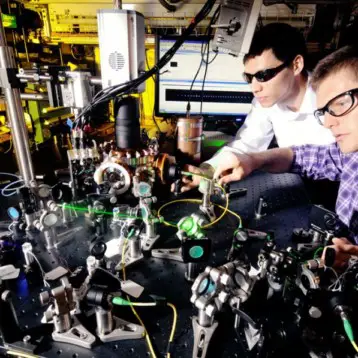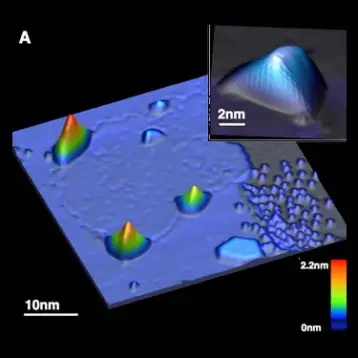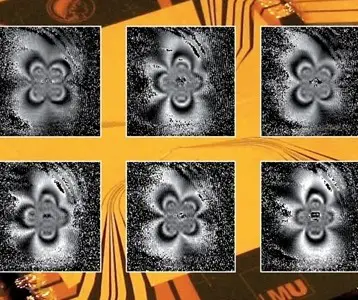|
The STM utilizes the ability of electrons to “tunnel” across a carrier in order to detect changes in the distance between a needlelike probe and a conducting surface. A tiny voltage is applied to the sample as researchers move the probe, which consists of a simple platinum-iridium wire snipped to a width of just one atom, to measure changes in current as the electrons tunnel between the sample and the probe. The scientists can use this data to reconstruct a map of the surface’s topology, right down to the atomic level.
While electrical currents can change within a nanosecond, measurements with the STM are painfully slow. The limiting factor is not the signal itself, but in the basic electronics involved in analyzing the data. Theoretically, an STM could collect data as fast as the electrons tunnel – at a rate of one gigahertz, or one billion cycles per second of bandwidth. Slowed by capacitance, or energy storage, a typical STM collects data at about one kilohertz (1,000 cycles per second) or less.
Schwab solved this problem by adding an external source of radio frequency (RF) waves. By sending a wave into the STM, the researchers showed that it’s possible to detect the resistance at the tunneling junction. Based on the characteristics of the wave that reflects back to the source, it becomes possible to detect the distance between the probe and the sample surface.
This technique, called reflectometry, uses standard cables as paths for the high-frequency waves to overcome the obstacle of being slowed down by the cables’ capacitance. This setup offers potential for atomic resolution thermometry – precise measurements of temperature at any particular atom on a surface. Also, this method can be used for motion detection so sensitive the STM could detect and even measure movement of a distance 30,000 times smaller than the size of an atom.
Schwab is confidant that his RF-STM will be used for a lot of good physics experiments.
TFOT already covered a number of STM related topics, including the creation of the sharpest manmade object by researchers from the University of Alberta, and the 2006-2007 Nanoart Competition between artist who relied heavily on STM technology to create their works of art.
More information about this new reflectometry technique can be found here.











